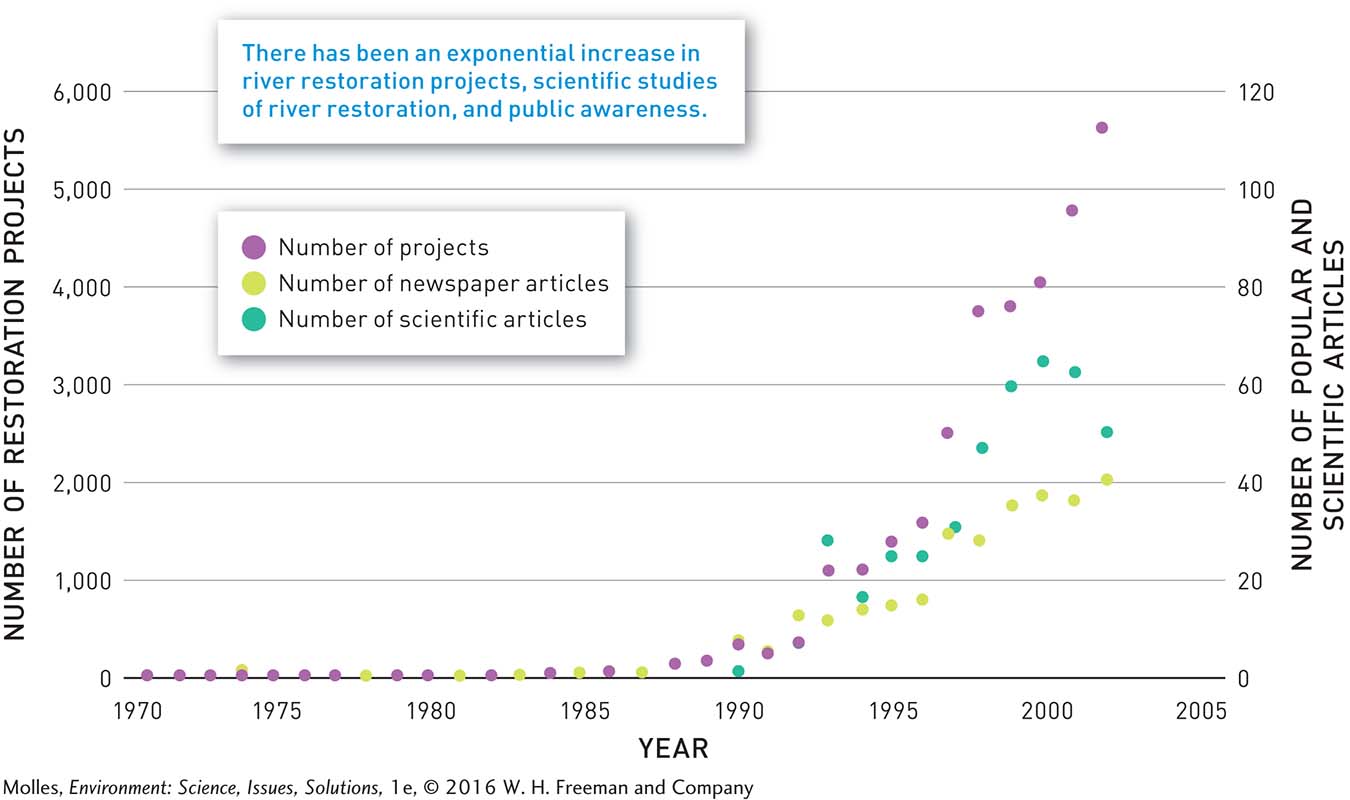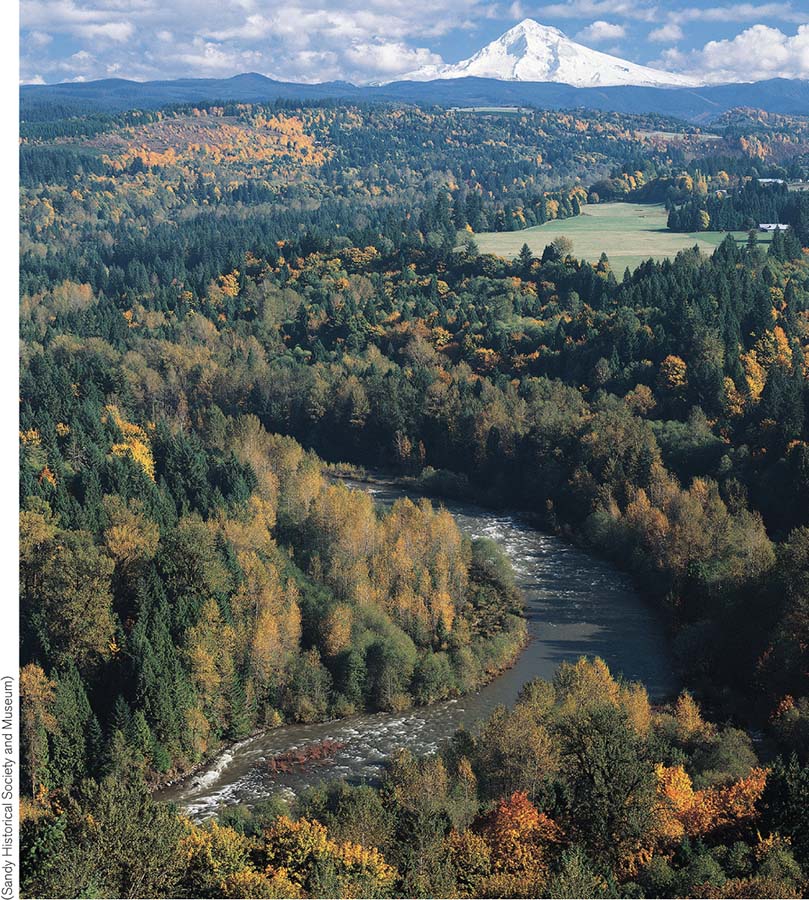8.9 River restoration may be a key to restoring decimated salmon populations

What factors may have contributed to the increasing pace of river restoration in the past two decades?
River restoration involves a wide range of actions, such as restoring the natural shape of channels, replanting vegetation, reintroducing native species, and reestablishing the natural flow by removing dams. In the United States, the number of river restoration projects has grown exponentially since the 1990s (Figure 8.33), which has had positive consequences for fish stocks.

Dam Removal and Restoration of Salmon Populations
Removing dams that impede movement and reproduction by migrating salmon is critical to restoring commercially important fish stocks. As of 2011, approximately 1,000 dams had been removed from rivers in the United States and more dams are being removed from U.S. rivers than are being built on them. One of the best studied of these removal projects took place on the Sandy River in Oregon, which feeds into the Columbia River. The Portland General Electric Company (PGE) developed the Sandy River for hydroelectric power in the early 20th century by installing two dams: Marmot Dam and Little Sandy Dam. Faced with upkeep of aging turbines and pressure to upgrade fish passage structures, PGE managers decided it would be more economical to remove the dams altogether and instead replace their generating capacity with wind turbines at another location.
One of the major questions that planners faced was how to handle the 730,000 cubic meters of sand and gravel that had built up behind the aging dams. Should they remove the sediment mechanically or allow the river to wash away the sediment? The company opted to let the river do the work.
In 2007 PGE followed through on its plan to remove Marmot Dam, one of the largest dam removal projects up to that time (Figure 8.34). Worries about the impact of the removal on fish were relieved the day after the dam removal was completed, when Coho salmon, Oncorhynchus kisutch, migrated right up the restored river channel. Estimates of the time for the river to remove half the built-


If you were in charge of monitoring the Sandy River’s response to dam removal, name at least three factors you would measure. Explain why you selected those factors.
Despite the massive movement of sediment, salmon were swimming up the river the day after the dam was removed and spawning successfully. Within a year, most of the gravel mobilized by dam removal was spread out over 9 kilometers downstream of the former dam, with finer particles like sand being dispersed farther downstream. Geologists are carefully monitoring the movements of sediments mobilized by removal of the Marmot Dam, as the Sandy River adjusts to its uninterrupted flow path from headwaters to mouth.

What factors likely contributed to reaching an agreement involving so many potentially conflicting interests in the Klamath River system?
PGE followed up in 2008 by removing Little Sandy Dam, which opened up the entire Sandy River system to migrating salmon. For the first time in nearly 100 years, the Sandy River was flowing freely from its headwaters on Mount Hood to the Columbia River (Figure 8.35). Scientists are carefully following developments in this very large-

Klamath River Dam Removal
Restoration of a highly modified river system such as the Klamath requires that we consider factors far beyond the impact of dams on salmon populations. For example, removing the dams will eliminate the 50 jobs associated with operating the hydroelectric system on the Klamath River. At the same time, dam removal would support an estimated additional 450 jobs across the region over the following 50 years. The existing reservoirs behind the dams support recreational fishing, which generates income to the local community. However, fisheries scientists project that removing the dams will revitalize the regional salmon fishery, which could generate tens of millions of dollars annually for nearby fishing communities.
Based on consideration of these issues and extensive scientific and engineering studies, the diverse interest groups involved converged on an agreement in early 2010. The agreement included a plan for sharing water in ways that would both restore salmon runs to the upper Klamath River system and protect the interests of farmers. Three years later, then U.S. Secretary of the Interior Ken Salazar recommended removal of the four major dams on the Klamath, an action requiring authorization by the U.S. Congress. Although removal of the four mainstream hydroelectric facilities would eliminate 169 gigawatts (GW) of hydroelectric power, renewable power sources such as wind or solar could replace it while fisheries populations recover, leading to a win–
Think About It
What do the flushing of sediments and spawning success by salmon following dam removal on the Sandy River suggest about the resilience of rivers and salmon populations?
What criteria should be used when deciding a course of action in a very complex economic and cultural situation such as that on the Klamath River?